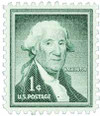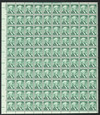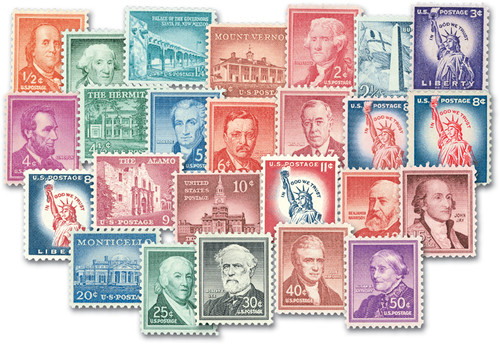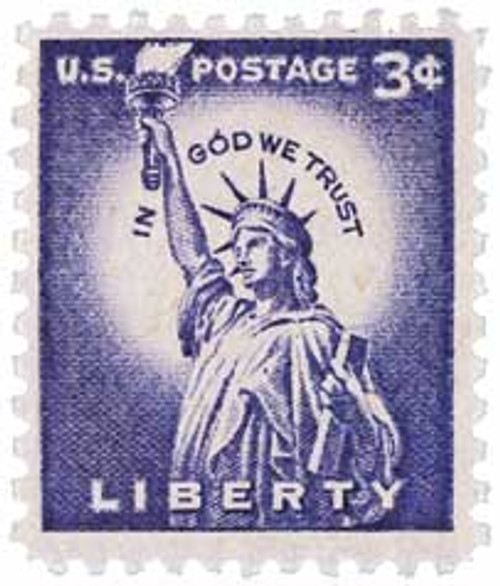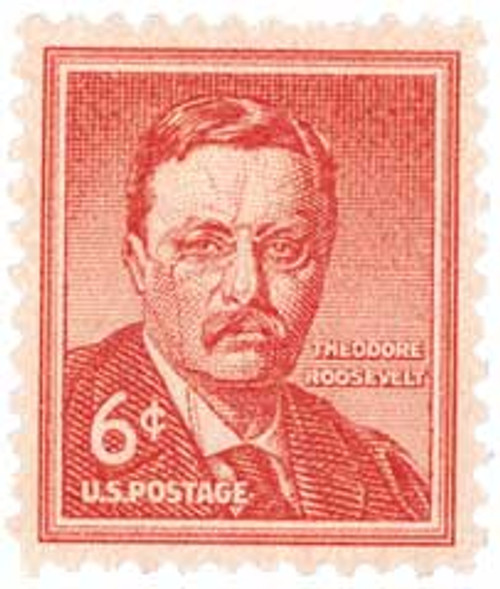
1954 Liberty Series,1¢ George Washington
# 1031 - 1954 Liberty Series - 1¢ George Washington
$0.35 - $27.50
U.S. #1031
1¢ George Washington
Liberty Series
1¢ George Washington
Liberty Series
Issue Date: August 26, 1954
City: Chicago, IL
Printed By: Bureau of Engraving and Printing
Printing Method: Rotary press dry printing
Perforations: 11 x 10.5
Color: Dark green
City: Chicago, IL
Printed By: Bureau of Engraving and Printing
Printing Method: Rotary press dry printing
Perforations: 11 x 10.5
Color: Dark green
U.S. #1031 is the 1¢ George Washington stamp of the 1954-61 Liberty Series.
The Liberty Series
Issued to replace the 1938 Presidential series, this patriotic set of stamps honors guardians of freedom throughout U.S. history. Eighteenth Century America is represented by Revolutionary War heroes and statesmen such as Washington, Jefferson, Franklin, Hamilton, Henry, Jay, and Revere.
Leaders of the 19th century including Monroe, Lincoln, Lee, Harrison, and Susan B. Anthony make an appearance. The 20th century is represented by Teddy Roosevelt, Woodrow Wilson, and General Pershing.
The Liberty Series also features famous locations important to America’s democratic history, such as Bunker Hill, Independence Hall, and the Alamo.
“Wet” versus “Dry” Printing
The Bureau of Engraving and Printing began an experiment in 1954. In previous “wet” printings, the paper had a moisture content of 15 to 35 percent. In the experimental “dry” printings, the paper had a moisture content of 5 to 10 percent. This process required stiffer, thicker paper, special inks, and greater pressure to force the paper through the plates.
Stamps produced by dry printing can be distinguished by whiter paper and higher surface sheen. The stamps feel thicker and the designs are more pronounced than on wet printings. The experiment was a success, and all U.S. postage stamps have been printed by the dry method since the late 1950s.
The First Commander In Chief
Washington was a representative at the First Continental Congress, which met in September 1774. At the Second Continental Congress, which opened on May 10, 1775, Washington was elected commander in chief. He had not sought the position, but accepted the responsibility.
General Washington became a hero of the people. Throughout the revolution, Washington seldom had more than 15,000 troops under his command. The British had a larger, better-trained army, more guns, and more supplies. But, Washington’s bravery and patience held the American army together. The brave general endured many hardships along with his troops. During the winter of 1777 to 1778, spent in Valley Forge, troops were forced to endure freezing weather with poor shelter, little food, and insufficient clothing. Some were even without shoes. Through it all, Washington’s stature among his soldiers and the American people continued to rise.
U.S. #1031
1¢ George Washington
Liberty Series
1¢ George Washington
Liberty Series
Issue Date: August 26, 1954
City: Chicago, IL
Printed By: Bureau of Engraving and Printing
Printing Method: Rotary press dry printing
Perforations: 11 x 10.5
Color: Dark green
City: Chicago, IL
Printed By: Bureau of Engraving and Printing
Printing Method: Rotary press dry printing
Perforations: 11 x 10.5
Color: Dark green
U.S. #1031 is the 1¢ George Washington stamp of the 1954-61 Liberty Series.
The Liberty Series
Issued to replace the 1938 Presidential series, this patriotic set of stamps honors guardians of freedom throughout U.S. history. Eighteenth Century America is represented by Revolutionary War heroes and statesmen such as Washington, Jefferson, Franklin, Hamilton, Henry, Jay, and Revere.
Leaders of the 19th century including Monroe, Lincoln, Lee, Harrison, and Susan B. Anthony make an appearance. The 20th century is represented by Teddy Roosevelt, Woodrow Wilson, and General Pershing.
The Liberty Series also features famous locations important to America’s democratic history, such as Bunker Hill, Independence Hall, and the Alamo.
“Wet” versus “Dry” Printing
The Bureau of Engraving and Printing began an experiment in 1954. In previous “wet” printings, the paper had a moisture content of 15 to 35 percent. In the experimental “dry” printings, the paper had a moisture content of 5 to 10 percent. This process required stiffer, thicker paper, special inks, and greater pressure to force the paper through the plates.
Stamps produced by dry printing can be distinguished by whiter paper and higher surface sheen. The stamps feel thicker and the designs are more pronounced than on wet printings. The experiment was a success, and all U.S. postage stamps have been printed by the dry method since the late 1950s.
The First Commander In Chief
Washington was a representative at the First Continental Congress, which met in September 1774. At the Second Continental Congress, which opened on May 10, 1775, Washington was elected commander in chief. He had not sought the position, but accepted the responsibility.
General Washington became a hero of the people. Throughout the revolution, Washington seldom had more than 15,000 troops under his command. The British had a larger, better-trained army, more guns, and more supplies. But, Washington’s bravery and patience held the American army together. The brave general endured many hardships along with his troops. During the winter of 1777 to 1778, spent in Valley Forge, troops were forced to endure freezing weather with poor shelter, little food, and insufficient clothing. Some were even without shoes. Through it all, Washington’s stature among his soldiers and the American people continued to rise.







